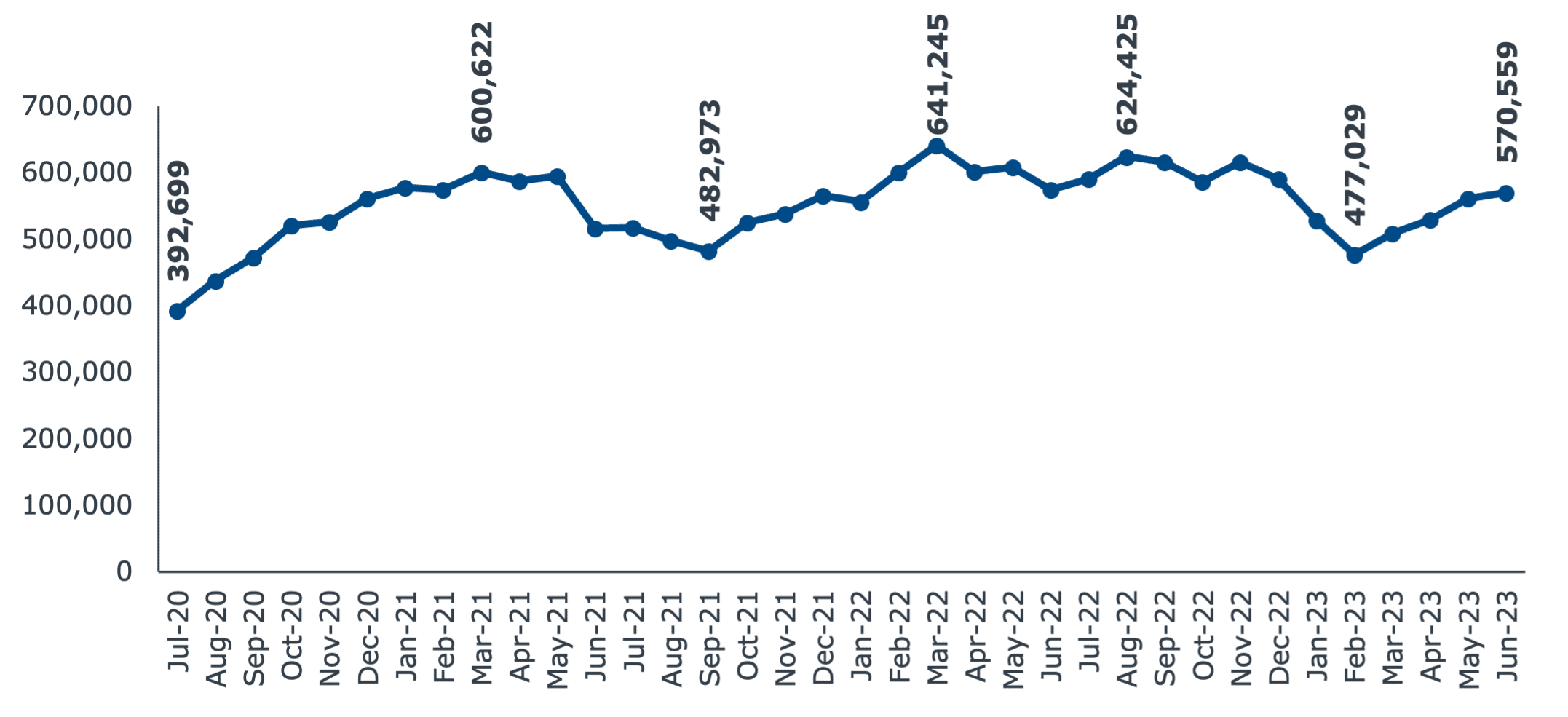Overcoming Obstacles to Nursing Enrollment Growth
Demand for nursing education, by both students and their prospective employers, suggests significant enrollment growth potential. Few schools have successfully maximized that potential, however, due to growth constraints. This report explores those constraints and offers eight responses to overcome these obstacles.
The challenges with nursing education
Nursing education has vexed colleges and universities for decades—despite high demand for nursing professionals and high student interest in enrolling, programs still struggle to launch and grow. The pandemic heightened nursing shortage worries; too few nurses graduated, and departures spiked due to retirement and movement into other fields. Meanwhile, qualified students are turned away from nursing programs every year given capacity limitations. In 2022, nearly 80,000 qualified nursing school applications were rejected.
-
80K
Number of qualified nursing school applications rejected in 2022
The nursing education landscape
Demand for nurses continues to rise. While the COVID-19 pandemic increased departures from the profession, nursing program leaders report that aside from suspended interest in programs targeting already-working nurses (e.g., Master of Science in Nursing), student interest remained high post-pandemic.
Applications did decline overall from 2021 to 2022 and continued observation will reveal if this is an exception or a concerning trend; however, qualified applications continue to exceed available seats. While too early to know with certainty, programs that serve a measurable labor market need (e.g., preparing students for registered nurse roles) should anticipate rebounding interest.
Job Postings for Registered Nurses
July 2020 – June 2023, National

Nursing education market landscape across degree levels
Associate Nursing Market
- Robust labor market. Very high and growing employer demand.
- Increasing preference for bachelor’s education for RNs may limit future associate demand.
- Robust competitive opportunity. Growing student demand, declining competition among institutions.
Bachelor’s Nursing Market
- Strongest labor market. High, fastest-growing employer demand.
- Preference for bachelor’s education for RNs should sustain strong demand.
- Strongest competitive opportunity. Student demand growth outpaces increasing competition.
Master’s Nursing Market
- Robust labor market. High, growing employer demand.
- Pressure for nurses to earn doctorates may decrease terminal master’s program demand, however.
- Robust competitive opportunity. Growing student demand but increasing market concentration.
Doctoral Nursing Market
- Moderate labor market. Lowest but growing employer demand.
- Pressure for nurses to earn doctorates may increase doctoral demand.
- Moderate competitive opportunity. Low but growing student demand.
About this report
This report outlines insights from over a decade of nursing education research and explores the factors limiting program growth.
- Section one explores trends across the associate, bachelor’s, master’s, and doctoral degree markets.
- Section two addresses the primary obstacles to growth: the faculty shortage and the clinical placement shortage. The report offers four tactics for overcoming these obstacles.
- Section three outlines modernizing nursing program curricula to meet today’s students’ needs. The report presents four tactics for addressing those needs.
This resource requires EAB partnership access to view.
Access the research report
Learn how you can get access to this resource as well as hands-on support from our experts through Professional and Adult Education Advisory Services.
Learn More